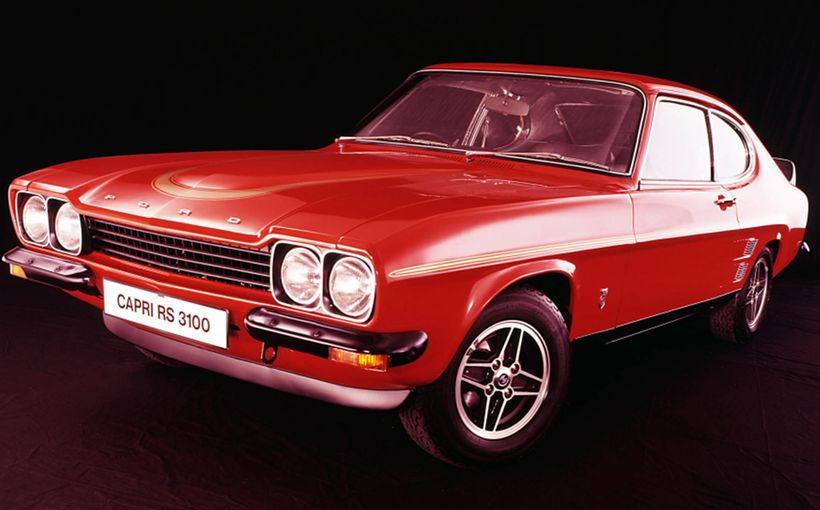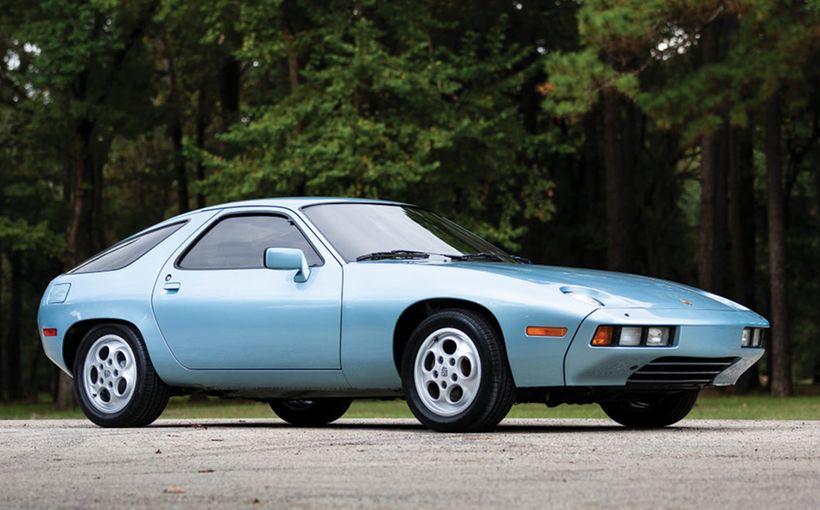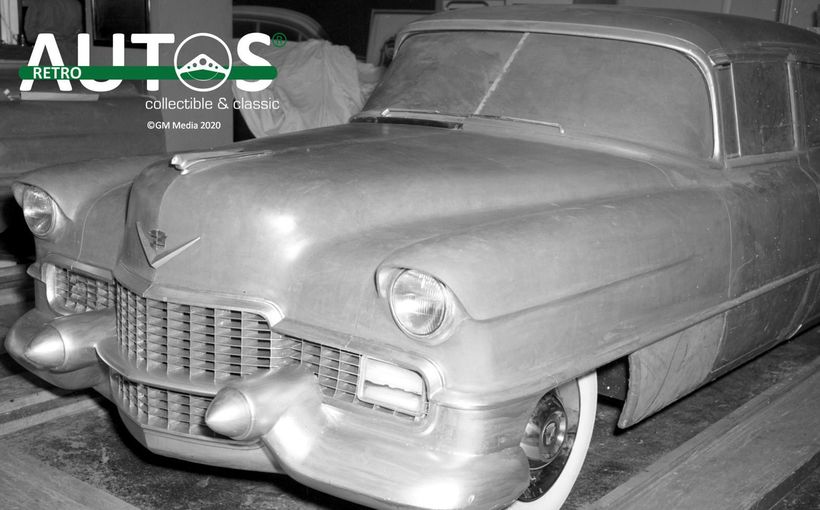Rover P6 3500: The UK Factory Prototype That ‘Died’ Down Under

Original factory or ‘works’ race cars are always sought after by collectors, which is a good thing because to preserve their rarity and value they are virtually guaranteed to remain as originally designed and built. Sadly this rare Rover V8 prototype was robbed of such status, after it was modified beyond recognition for Australian sports sedan racing in the 1970s.
The drastic surgery it underwent to (unsuccessfully) make it competitive with the big guns of local sports sedan competition irrevocably destroyed its factory-built integrity; sort of like cutting up a genuine works Trans-Am Mustang or Camaro. However, this beast was even rarer, as it was one of only two commissioned by British Leyland for domestic and international Group 2 touring car racing.
Its first and only outing was a gruelling endurance race at Germany’s notorious Nurburgring in 1970. The Rover V8 left a multi-car Porsche works team in its wake as it built a massive lead, only to suffer a drivetrain glitch that forced its retirement.
Even so, it was the talking point of the race, prompting expectation of more cars and more races. Sadly it was not to be as British Leyland shut down its famous (formerly BMC) competitions department that year and the exciting P6 Rover V8 program died with it.

Rover V8 Goes Racing
Before the formation of British Leyland Motor Corporation (BLMC) in 1968, the British Motor Corporation (BMC) competitions department was regarded as a world leader in motor sport. Under British Leyland chairman Donald Stokes, the department (or ‘Comps’ for short) was given approval to continue operations, provided it could produce enough wins to generate the publicity needed to justify its existence.
One of few positive aspects of the new BLMC conglomerate was that Comps under Peter Browning had access to a wider range of makes and models with which to develop new race and rally cars. However, Stokes had made it clear that finishing second just meant BLMC would be the first of the losers. Only wins would suffice. The pressure was on.
Following the release of the Rover 3500 (aka P6B) in 1968, Browning could see considerable potential as a touring car. Its lightweight aluminium 3.5 litre V8 engine resulted in not only a sporty power-to-weight ratio but it was also free of the usual weight and handling penalties caused by a traditional cast-iron lump hanging over the front wheels. In fact, the aluminium V8 was claimed to be no heavier than the P6 2000’s 2.0 litre inline four.
In 1968 Comps sourced a Rover 2000 factory development hack (Registration JXC 808D) which started off competing in rallycross events before its touring car transformation began. As British tin-top racing at that time complied with the FIA’s liberal Group 2 regulations, there was considerable scope for modifications to improve performance.

By late 1969, JXC 808D was ready for track duty. Under the bonnet beat the heart of a 4.3 litre Traco-Oldsmobile version of Rover’s Buick-based aluminium V8, fed by four twin-choke Weber 48mm IDA downdraught carburettors. Power was claimed to be a reliable 365bhp (272kW).
The P6 2000’s standard four-speed gearbox and diff were considered strong enough to cope with the V8’s near four-fold power increase. The suspension’s four coil springs and shocks were uprated and bronze suspension bushes replaced OE rubber throughout for sharper handling.
Upgraded front brakes were big 12-inch diameter F5000 vented discs with 10-inchers under the tail and the stock De Dion rear-end was toughened up with extra locating arms. Featherweight magnesium Minilite wheels reduced unsprung weight and put big rubber on the road, with 15 x 10-inch front and massive 15 x 15-inch wide rear tyres allowed under Group 2.
More weight was trimmed with aerodynamically-flared fiberglass mudguards front and rear to shroud the huge tyres. Much of the interior was also given a crash diet as Comps worked hard to undercut the standard P6 3500’s kerb mass of just under 1300kg.

When track testing commenced early in 1970 the Rover V8 was fast ‘straight out of the box’ as they say and amongst the quickest cars in British touring car racing, claiming several wins and fastest laps. It was also dogged by various mechanical failures, but Comps was using its race outings to expose any weaknesses and eliminate them one by one.
No surprise that these fragilities included the marginal gearbox, which was replaced with a much tougher GM Muncie muscle car ‘box from the US. The standard De Dion rear suspension had to remain under the rules but the standard diff was replaced with a stronger Jaguar E-type diff with inboard disc brakes. The cantilevered front suspension was also revised for greater strength and roll centre adjustment and prominent aerodynamic dive planes or winglets were fitted to the front quarters to improve front-end grip and high speed stability.

From a huge entry of 74 cars, 64 were chosen to start. The team to beat was a Porsche factory outfit comprising three of the marque’s 914-6 GTs powered by potent 2.0 litre flat six engines shared with the iconic 911. However, Rover’s new V8 prototype took qualifying by storm, clocking some astonishing times with top speeds exceeding 160mph (250km/h) that saw it cast as the British ‘hare’ that the Germans would have to chase.
The only concern was a slight drivetrain vibration traced to the tailshaft; a problem that emerged in the first car which Comps thought it had cured. Leaving nothing to chance, a new shaft was flown in from the UK and installed prior to the start.
The grid order was determined by each car’s racing number so the Rover was down in 21st place when the event started at 1am. However, by the end of that first daunting lap as a river of driving lights poured through the dark forests, the bellowing Rover V8 was in front and quickly left the field behind, lapping in the 13-minute bracket compared to the 17-minute laps of the stunned Porsche crews.

Sadly there was to be no fairytale ending for the Brits as the maddening drivetrain vibration had returned by mid-morning and continued to worsen. After 15 hours it had cracked the rear of the gearbox casing and started an oil leak. After 16 hours and with the tailshaft threatening to part company with potentially catastrophic results, the oil-stained Rover was forced to retire when holding a massive lead of more than three laps (84km!) over the Porsches. Following the Rover’s demise, the German cars cleaned house finishing first, second and third with only 24 of the original 64 starters finishing.
The Rover’s high profile failure was the last straw for Stokes and a hostile BLMC board, after spending big on a three-car team of Triumph 2.5 PIs for the 1970 London to Mexico World Cup Rally held only a few months before. Although two of the three surviving Triumphs had finished second and fourth to the first and third-placed Ford Escorts, only a win could have justified such a huge financial and logistical commitment.
In late August BLMC formally announced that it was shutting down its competitions department. And with that closure went the burgeoning P6 3500 touring car program; a shattering disappointment for Browning and his team just when the car was showing its largely untapped potential on the world stage.

British Thunder Down Under
If JXC 806D had just been parked under a sheet in a dusty corner somewhere, it could well have been preserved in its original as-raced condition, dusted off and revered today as a rare factory prototype race car of significant historic and collectable value.
Unfortunately its sad fate lay half a world away. Leyland Australia knew of the prototype’s runaway performance at the Nurburgring and made arrangements for the car to be shipped to Australia, to be driven by Melbourne-based Leyland dealer and Mini racer Jim Smith in local sports sedan events.
It was a logical fit for Leyland Australia’s racing activities, as the company was selling the P6 3500 in local showrooms. Smith’s Rover became a new member of Leyland’s high profile ‘Young Lions’ racing team which in 1970 had successfully campaigned a variety of BL products in corporate blue and white colours, from hot Minis to Austin Healey sports cars.

The Rover attracted heaps of publicity thanks to media events staged in Sydney and Melbourne. It also created considerable expectation, given that it was an exotic, fully-imported factory race car presented in a flawless skin of corporate blue and white paint complete with the driver’s full name (that’s James, not Jim) displayed on each front mudguard.
However, it flattered to deceive as Ron Baddeley, the young mechanic charged with looking after the car, soon discovered. There were numerous items needing attention including sagging springs, overly soft anti-roll bars and an undersized brake master cylinder to name a few. He also discovered that the 365bhp claimed for the Traco-Olds V8 was actually more like 340bhp on Repco’s dyno. Baddeley did a considerable amount of work to unleash more power from the aluminium engine.
The Rover’s much anticipated debut at Calder Park in May 1971 was a fizzer as the car was hobbled by brake problems. It went like a bullet in a straight line but lap times recorded at other outings that season told the true story. The UK import was several seconds off the pace of the fastest locally-built sports sedans of the era, led by Bob Jane’s staggeringly fast Repco V8-powered LC Torana GTR XU-1.

Mindful that it was built as a touring car, Smith decided the Rover would need a radical reinvention if it was to be competitive in this unique class of racing which allowed all manner of technical freedoms far exceeding those under Group 2. The primary goals were to improve its power-to-weight ratio and weight distribution.
The car was stripped bare and the 4.3 litre aluminium V8 was replaced with a 5.0 litre (302cid) cast-iron Holden V8 based on a dry-sump F5000 Repco short motor. With reworked cylinder heads and the four big 48mm Webers transferred across, the larger and heavier Holden V8 had a competitive 480bhp (358kW).
The Rover was a natural understeerer even with the light alloy V8, so given the extra weight of the new cast-iron Holden donk it was decided to move it back behind the front axle line to create a true mid-engined layout for ideal weight distribution.

This required cutting a huge hole in the firewall of course and moving the engine back more than 600mm, so that it sat partly alongside the driver with the dry-sump oil tank on the front passenger floor. It was hoped that the big loss of chassis stiffness caused by this brutal surgery would be restored by a new welded steel roll cage with substantial cross-bracing. The rear doors were also welded shut.
To allow the lowest possible ride height for a low centre of gravity, the cabin floor was re-made from steel sheet at a lower height than the original. This allowed the exhaust pipes to run above the floor under aluminium covers with the huge tailpipes emerging through the sills on each side. Other internal panels were either remade in aluminium or removed. By then only about 10 per cent of the original car remained.
The front and rear suspensions were redesigned using proven open wheeler principles, with upper and lower wishbones and Monaro uprights at the front and a similar arrangement at the rear with Jaguar uprights and sliding spline driveshafts. The steering was also sharpened up with an MGB rack and pinion in place of the original steering box and linkages.

It was indeed a massive undertaking and by June 1972 the ‘Rover Mk 2’ was ready to return to the track at Victoria’s Hume Weir circuit. However, it only took Smith a couple of laps in practice to discover that it was now virtually un-driveable.
The Rover was promptly loaded back onto the trailer and did not appear again until early in 1973, now glowing in the bright yellow colours of new oil sponsor Shell along with Camel Filters courtesy of tobacco giant RJ Reynolds.
However, during the 1973 season the eye-catching new livery and extra funding could not disguise the fact the British car was still several seconds per lap slower than the fastest sports sedans in the land. The huge modifications in 1972 had left it with serious chassis and handling disorders that proved impossible to cure.

By early 1974 Smith had clearly had enough. He bought the ex-Bob Jane ZL-1 Camaro and the Rover ended its racing days with various owners in South Australia before disappearing from the scene. It was a sad end for what started as a rare factory prototype created half a world away in the UK.
However, it must be said that even though this car never got near the lap times of Australia's fastest sports sedans, it did score several top-five finishes in such company plus a few wins against lesser machinery. And when under new ownership in South Australia (see comments below) it was consistently one of the fastest sports sedans in the state.
One can’t help but wonder, though, what might have been had British Leyland explored the raw potential of the P6 Rover 3500 in UK and European competition. Indeed, it could be argued that it planted a seed which bore fruit a decade later when Austin Rover Group and TWR turned the aluminium V8-powered Rover SD1 3500 into a multiple UK touring car champion and potent international touring car contender.
On reflection, though, JXC 806D always seemed destined for a sad ending just like the troubled parent company that created, then killed it.









